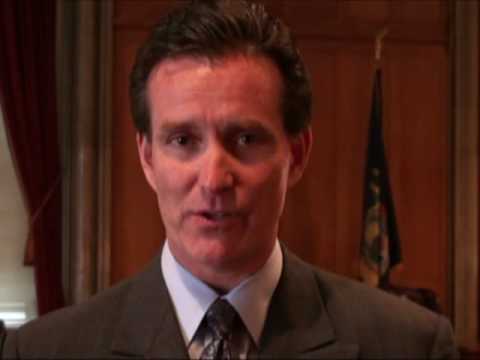
Hauppauge Patch: Education Commissioner, State Senator Visit Hauppauge Schools
By Christine Sampson
Two state officials got a boots-on-the-ground look at what the Hauppauge school district is doing these days – and they liked what they saw.
Department of Education Commissioner John B. King, Jr., and Sen. John Flanagan, R-East Northport, toured Hauppauge Middle School and Pines Elementary on Monday to observe classes and facilities and talk with students and faculty.
"I was impressed with the school, where you have an energetic, committed principal [and] teachers who are clearly committed to kids' success," King said following his visit to Hauppauge Middle School. "There's clearly a lot of support here for students at all academic levels."
King and Flanagan, accompanied by principal Maryann Fletcher, superintendent Patricia Sullivan-Kriss, New York State Regent Roger Tilles, school board president Eileen Mass and other school administrators started off with a visit to a seventh-grade co-taught classroom that was in the middle of a history lesson.
According to Glen Eschbach, assistant superintendent for curriculum and instruction, in a co-taught class, which averages 24 to 25 students at Hauppauge Middle School, two teachers and a teacher aide combine to teach and support students in both the general education and special education populations. Teachers in Hauppauge Middle School will receive 25 days of co-teacher training this year.
King, a former history teacher himself, said he was thrilled to see such an engaging experience in which one of the two teachers was dressed in historical attire while discussing public policy issues with his students.
The state and school officials toured the library, visited a life skills class – in which students aren't assigned to a specific grade level but instead work on skills aligned to individual goals – and visited a newly remodeled eighth-grade home and careers classroom. After those visits, Fletcher and King discussed "redefining what learning looks like in New York," she said.
"That's exactly what Common Core is looking for us to do," Fletcher said. "To pull experiences together instead of learning in little chunks. It's really looking for bigger ideas and asking kids to make connections to other things."
Then, it was lunchtime, and King and Flanagan headed down to the cafeteria, where they spoke directly with the students. When King asked a petite seventh-grader, Gigi, what she would change about her school, Gigi shook her head and said "nothing."
"It was great to hear their excitement about school," King said. "They were excited about school, about specific classes, about technology class. ... That's always nice to see, when kids are really engaged with school. I could also see how the enrichment activities matter a lot to them, whether the thing they're most excited about is sports ... or music. We've got to make sure we protect those things in all of our schools."
A brief, informal roundtable with several teacher aides and teachers yielded a frank discussion about state assessments and student preparedness. Statewide, the passing rate of students who scored at the proficiency levels was only between 30 and 40 percent.
"Right now, 30 percent of our kids technically need extra support right now," Sullivan-Kriss said. "I don't think 30 percent of them do, but that's what the assessments showed. ... We need to do what is best for the kids. We don't have the resources to provide extras to all."
